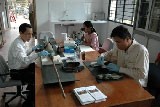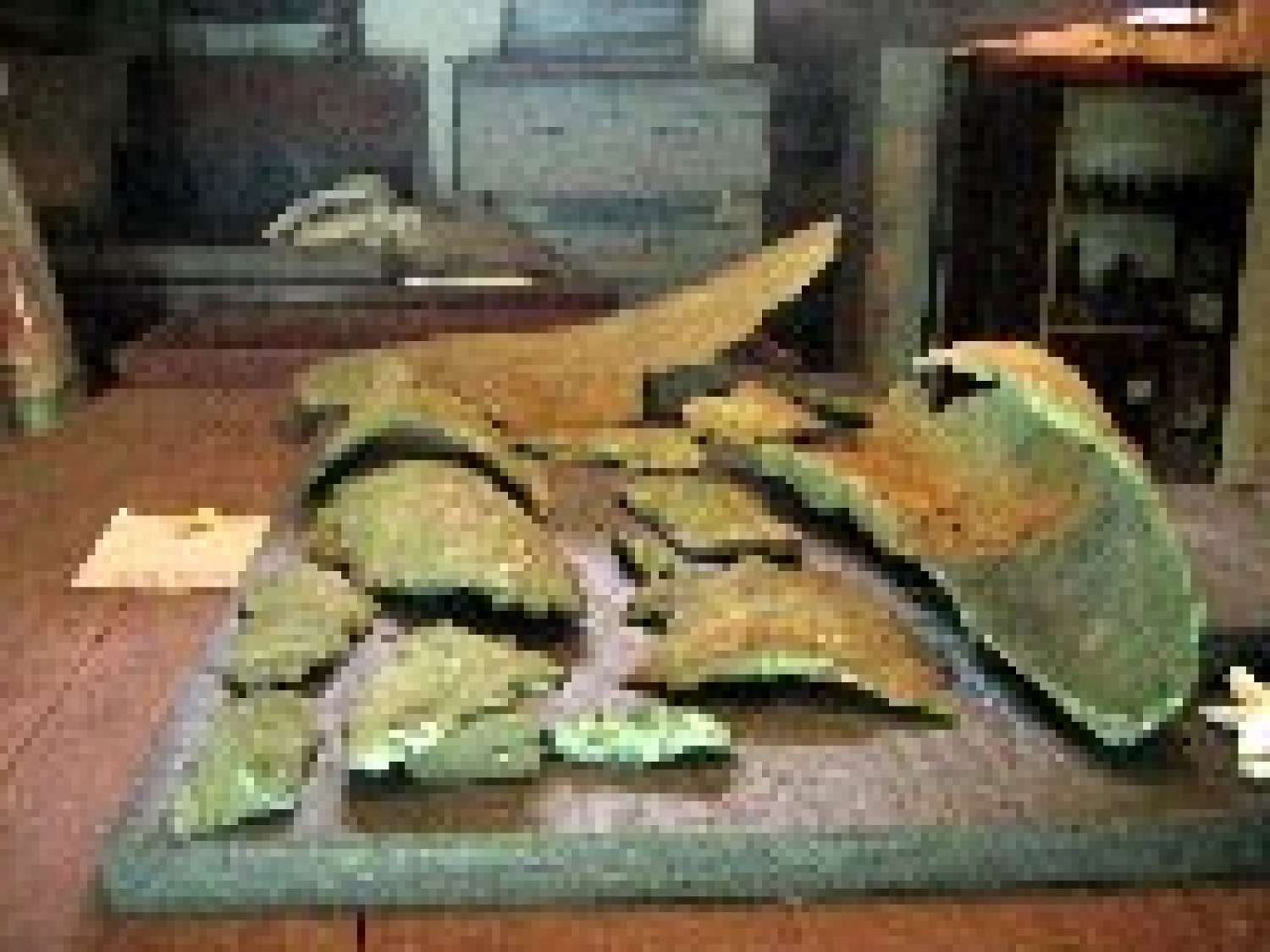The goals of the project include completing a thorough survey of the bronze collection to determine its overall condition and needs, and establishing a laboratory facility for bronze conservation. The project will also include performing conservation treatments on selected bronzes from the collection, training members of the museum staff in the care and treatment of bronze, and finally, improving storage for the collection.

To carry out the project, a consulting conservator, Sean Charette, was hired to work on site at the National Museum for an eighteen month period. In addition, staff members from the Freer conservation lab have been traveling to Cambodia for stays of two to three weeks in order to work with Charette on the various aspects of the project. After Charette concludes his period of stay at the museum in the fall of 2006, follow-up visits are planned in order to provide further training and support for the project and to assist museum officials in planning for the future of the bronze conservation program. Materials shipped from the United States were used to establish a basic conservation laboratory at the National Museum. A core group, made up of four of the museum staff, were then trained to complete condition surveys of the entire bronze collection. This was quite a task due not only to the large number of artifacts, but also to the objects’ condition. A number of the bronzes had been sealed in bags by the museum staff over thirty years ago when the museum was closed before the Khmer Rouge took control of Phnom Penh and many of these objects have yet to be unsealed.
The improvement of the storage condition of the artifacts was another important goal of this project. The environmental conditions in Phnom Penh are not exactly ideal, since the area is subject to seasonal rains. Although some parts of the museum do flood during the rainy season, this was overcome by using storage systems that keep everything well off the ground. The last step was to provide additional training in basic conservation to a small group of the museum staff. In addition to being taught to perform conservation treatments, the staff is also learning about bronze casting techniques and other topics that will further their understanding of the objects. It is hoped that the project will ultimately not only address the goals listed above, but will also create a self-sufficient laboratory that eventually serves as a center for bronze conservation in Cambodia.

